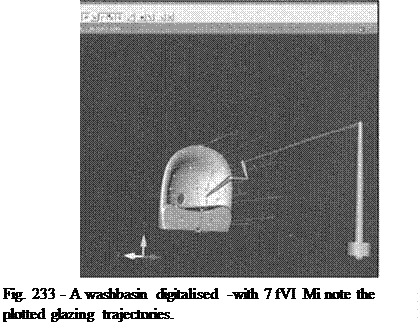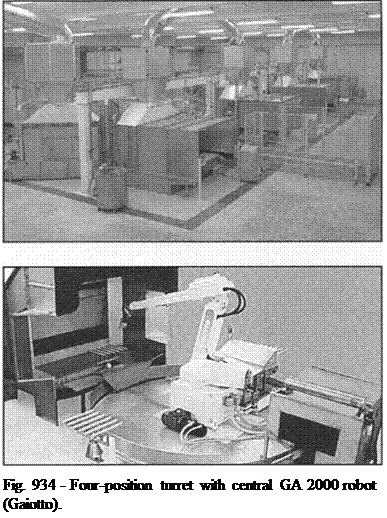
CATEGORIES:
BiologyChemistryConstructionCultureEcologyEconomyElectronicsFinanceGeographyHistoryInformaticsLawMathematicsMechanicsMedicineOtherPedagogyPhilosophyPhysicsPolicyPsychologySociologySportTourism
Robotised glazing
This system uses purpose-built anthropomorphic robots; while they are suitable for various industrial applications they are nevertheless different from the robots used for handling and finishing:
Slimmer structure, low weight and other features to ensure simpler mobility and easier "self-learning";
Lower power as they are tiot expected to handle piece;
Improved w atcrproofing and parts insulation as this is a high-moisture working environment.
The anthropomorphic rolxn has 6 axes, designed to reproduce the movements made by a human operator's arm and so allow parus of particularly complex geometry to be glazed. The rolx)t works with the aid of so-called "serving* systems, so called because they respond to input provided by the robot itself. Such systems include:
Glazing booth with automatic turnstile;
Multi-position turret;
Mass control;
t Control systems;
Conveyor systems.
The latest Gaiotto robot models {e.g. the GA 2000) feature "self-learning" systems: in other words, the spray guns on the robot itself are moved by an expert glazer and recorded by the software point-by-point to plot rejx*atable trajectories. Other systems likeTWD* by ( ìaiotto allow olf-line rolx>t programming via product digitalisation and

trajectory data acquisition (in this case trajectories are simulated according to acquired working parameters and existing machine constraints). The generated software is then entered in the robot and optimized to ensure smooth, linear movement.
The glazing robot operates inside a glazing booth; this is usually made of stainless steel. Kssenttally, there are two types of glazing booth:
Dry booth: maximises pollutant removal;
Wet booth: lower pollutant removal rates but allows any unused glazed to be recycled.
Both booth types consist of a work area and a rear-mounted filtration unit; the latter plays a critical role in the abatement of harmful dust and the fan-extraction of contaminants that might otherwise compromise product quality.
The dry booth filtration unit consists of two compartments: the first contains airflow diverter screens which catch solid particles/dust and then drop them into a special tank underneath; the second contains forced-draught filter plates across (the air is drawn in by an ov erhead fan); when clogging of the plates reaches a preset level they are blown 'clean' by a compressed air circuit, which cause the filtered material to drop into a collection tank.
In the 'wet' booth type the filtration unit is located in the lowermost area and collects water arriving from a tank at the top of the booth, which falls as a veil (or 'curtain') at the rear of the booth. The water collection tank is equipped with a lloat and pump to feed water into the loop and collect the run-off.
 |
The glazing booth can be fed the pieces to be glazed by two or four-position turrets. These turrets operate as follows: the ceramic material is placed on turntables which - by way of 180° movements for two-position wheels or 90° movements for four! position wheels - convey it into the booth. When one turntable is inside the booth all the others are made available for loading/unloading and cleaning operations. The turntables can be fitted with porous resin piece positioning pads; these are provided with an air feed, for self-cleaning purposes.
Upstream from the glazing robot there may be digital systems to check for and detect positioning errors. These systems use product images transmitted to a computer by one or more cameras. The computer notes any differences with respect to the sample image and then adjusts the robot program to take the new spatial coordinates into account.
Gaietto uses a Mass Control* system based on three parameters:
Spray com- angle, to pn >\ ide diflcrciitly-sizcd brush strokes' thus adapting item dimensions to surface area to be covered;
Airjet nebulisation pressure, to adjust jet length and so reach item parts located at different distances and to adjust spray density;
Quantity of product delivered: to ensure homogeneous on-part coating thickness by adjusting the outflow rate on convex/concave parts accordingly.
 |
Efficient coating is achieved by smoothly combining all three parameters; this eliminates common defects such as the orange peel effect, dripping and overs pray.
Date: 2015-04-20; view: 1637
| <== previous page | | | next page ==> |
| I 2.2 - AUTOMATIC GLAZING | | | I 2.4 - GLAZING INNER SURFACES |